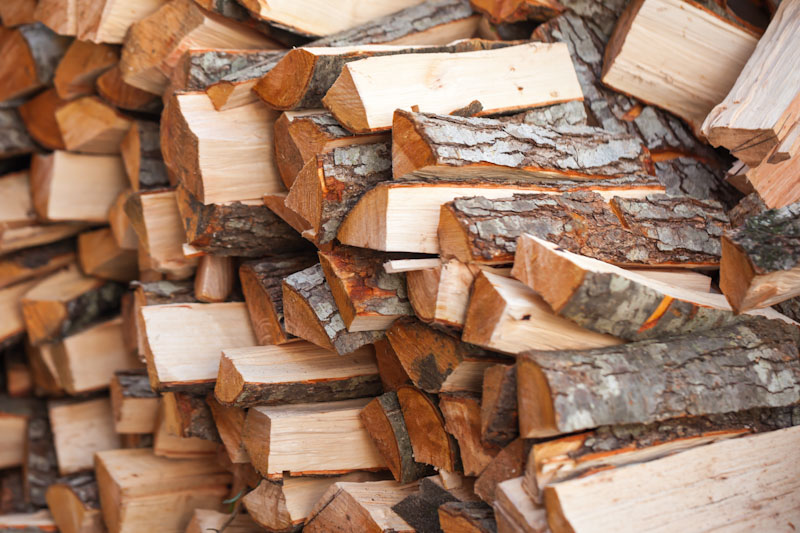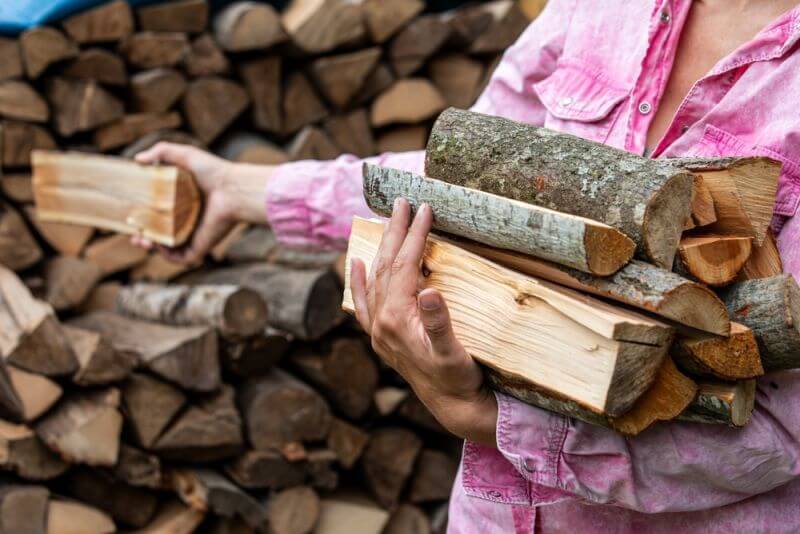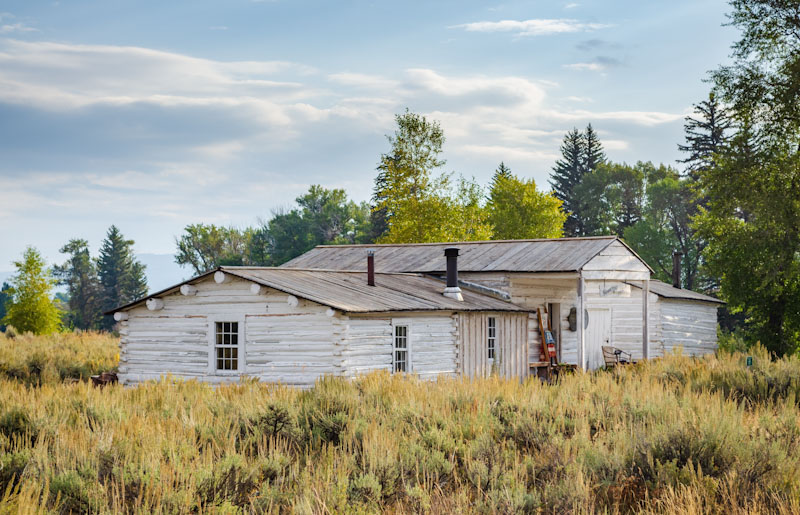With wintertime fully upon us, I’m sure that we’re all content in the knowledge that we’re ready, just in case another Winter Storm Uri comes along. While all those other people will be freezing their whatever off, we’ll be warm and dry in our homes, sitting in front of the fire. But I have to ask, just how ready are we?
Wood fire is the historic means of heating homes, in use pretty much around the world, up until recent times. Although other fuels have been used, it wasn’t really until the industrial revolution that wood lost Its place of primacy as a heat source. Today there are still people who heat with wood, even here in the United States; but they are clearly in the minority.
While the EPA has been busy trying to make it harder and harder to heat with wood, preppers have been busy buying wood burning stoves and preparing to heat our homes with wood, in the event of any disaster, whether a TEOTWAWKI event or just another power outage. But again, I ask, just how ready are we?
Here’s the problem I see. It’s a matter of fuel. Just how much firewood do you have on-hand and how long will that firewood last you? Few of us truly have enough. I have a couple of cords stacked up in my backyard, and I’m sure that is not enough.
People who heat their homes with firewood generally consume between four and six cords of dried hardwood firewood per winter. I’m not talking about pine here; that’s about the worst firewood you can get. I’m talking about something like hickory, oak, or ash. The amount of heat energy stored up in hardwoods is much higher than that of softwoods, making them the better bargain and better for survival. Just look at these heat value numbers:
- Oak – 29
- Hickory – 28
- Apple – 27
- Walnut – 22
- Birch – 21
- Cherry – 21
- Ash – 20
- Elm – 20
- Pine – 17
- Cedar – 13
What that means, in practical terms, is that each oak log will give you nearly twice as much heat as a comparable sized pine log (actually 70% more). Not only that, but those logs burn longer, cutting down the amount of time you have to spend hauling wood in from the woodpile and attending your fire. So, while it is useful to have a little bit of pine or cedar in your woodpile, for starting fires with, the bulk of your woodpile should be something that is going to produce more heat.
Building Your Woodpile on the Cheap
It probably sounds to you like I’ve juts piled another cost on your prepping. I’m not. Fortunately for us, building a woodpile is something we can do, without having to spend a lot of money. That is, we can do it if we have a chainsaw and either a truck or cargo trailer. I built the four-cord woodpile at my former house, hauling wood in a 4’x 8’ trailer, behind a compact car.
There are plenty of opportunities to cut wood for firewood, rather than having to pay for it. Storms knock down tree limbs or even whole trees. Trees die. People cut down trees and stack the wood by the curb to be picked up. You just need to train yourself to look for these opportunities and be willing to put in a little sweat equity.
Here are my favorite “free wood” options I look for:
- Storm damage – Ride around after any major storm and you’re likely to find people with tree limbs down. If you have your chainsaw in the vehicle, you can offer to take care of their problem right then and there. That way, they won’t call someone else to do it. Trees or branches that fell in the street are free pickings, making you look like a public-minded citizen.
- Offer Services to the City – Speaking of looking like a public-minded citizen, try offering your services at city hall. Municipalities often have trees that need removal, either for new projects or because the tree has died. This doesn’t always work, as some municipalities will want you to have insurance and be bonded to cover accidents; but you won’t know until you ask.
- Construction sites – I only bother to pay attention to large construction sites, as there’s little likelihood that there will be trees to cut down on smaller ones. But a housing development, new office building, factory or shopping center is likely to have several trees that need removal. The bigger problem is going to be telling them that you can’t take them all down.
- Dead trees – I’m always keeping my eyes open for any dead trees I see. To most people, that dead tree is a problem, and depending on where you live, they might see it as an expensive problem to deal with. Offering to take down that tree and remove it from their property will seem like an act of charity. Little do they know that you’re the one receiving the charity.
As a side note on this – I’m a woodworker, as well as a prepper. We went to a Christmas tree farm last December, to cut our own tree. As we were leaving, I spotted a dead oak tree, with a 30” diameter burl on it. I asked the owner of the farm if I could have it, and he said I could, just as long as I cut the tree down (which I would have had to do to get the burl anyway). That burl is probably worth close to $1,000.
If you’re going to cut down trees or clean up branches, remember that there’s more to it than just getting what you want out of the deal. You’ll need to clean up the branchlets and other parts you can’t use, rather than just leaving them sitting there. in most cases, you can just pile them at the curb, but make sure that you can do that, before making that assumption.
What About a SHTF Situation?
While cutting enough wood to take you through a short-term disaster is a problem; it’s nothing compared to the problem which will exist after a TEOTWWKI situation. What I see in the prepping community is the attitude that we’ll all be okay for heat, because we can heat with wood. But once you use up the wood you’ve got stockpiled, where are you going to get more firewood from?
We have to assume that the trees in our neighborhoods will likely be burnt down by others who are less prepared, as they try to keep warm. That probably will extends as far as tearing down condemned buildings to burn the wood in them. That’s all pine, so it won’t be the best firewood anyway; but for those people, it will be better than nothing. Still, it leaves us without that option.
Cutting trees for firewood in a post-TEOTWAWKI world is going to be a big problem. We’ll likely go through more than the aforementioned four to six cords of wood, as we’ll also be using it for cooking all year long. That means having to cut, split and haul enough wood to our homes.
Our first problem is finding trees to cut. Where is the closest stand of woods to your home? What kinds of trees are growing there? Are they good hardwood or something less desirable? Are there a lot of deadfalls on the ground or is it pretty clear?
How are you going to cut those trees down and then cut them into manageable sections that you can take home? In olden times, felling trees was a wintertime activity, giving rise to the saying, “He who cuts the wood, warms himself twice.” Cutting the tree down is axe work; but once it’s down, you’ll need a bucking saw to cut it into manageable sections. Further bucking can be done back home, if you prefer, as well as splitting the logs for the fire.
But the biggest problem is going to be transport. How can you possibly move that wood home, if there’s no gasoline for your truck? They used to use horse-drawn wagons and sleds to move wood in olden times; but there are few of us today who have horses or wagons.
I’m afraid to say that I don’t have an answer for this. I’m fortunate in that I live only a few blocks from the nearest stand of what passes for woods around these parts. While the trees aren’t all that grand, at least they aren’t hard to cut down. Being close, I can bring the wood home in a wagon or wheelbarrow, if nothing else. But if I didn’t have that to count on, I don’t know what I’d do.
You need to put some thought into this one. Like other survival activities that would take place far from home (hunting and fishing in particular), transportation will be an issue. What can you use and what sorts of limitations will that put on how much you can bring home? You’re better off finding a solution today, rather than waiting until you need it.










Alan | January 24, 2024
|
One of the best sources for wood when I lived in the Central Valley, California, was cutting down the farmed out almond trees in orchards. The public could go and the workers would designate the rows of trees to cut down and haul away. You could leave the small branches or haul it all. But you cut up your wood right there.
Wayne Bachmann | January 24, 2024
|
I get my wood for free. I work for an arborist.
Daniel Turner | January 24, 2024
|
Fortunately we have some land and I currently have a lot of trees to take down. There are several that need some guidance and I got a 5000.lb winch and a hitch mount to put it on. It will then go on the back of the tractor. I also have wood to pull out of tight locations and the winch is just right.
ridge runner | January 24, 2024
|
I live off grid waiting for teotwawki. I heat with only wood .There are huge Jeff pines and Pinyon everywhere. I have three 6 foot cross saws , half a dozen various limb saws with many extra blades. Some small collapsible limb saws , . I’ve collected many different splitting mauls , extra handles, many double bit axes with extra handles and sharpening files. Wheelbarrows and utility wagons with solid tires for transport . When gasoline is history and so are my chainsaws and splitter ~ I’m pretty much set . Only thing is I’m no spring chicken , so I better keep healthy and in shape . Wood fires are a lot of hard work.. Cross saws take 2 people . Am I forgetting something?
Greg Everard | March 29, 2024
|
Yes, transport of goods is a problem if TEOTWAWKI truly arrives, I can think of a number of ways a resourceful (or well off) person could manage: 1) build a wood gassifier (aka Producer Gas) to run your existing truck, tractor or car, these were used widely during WW2 but tended to be finnicky and limited power output and range. 2) Ferment waste fruits and sugars and distill alcohol fuel to run your vehicles. 3) convert said truck, tractor or car to run on steam power or raid a museum for a working steam traction engine. 4) build a small steam power unit to act as a prime mover (upscale a PYRTE model traction engine?), 5) If you live in a rural area, keep a pet horse or donkey and train it to pull a cart. 6) create (or buy) a cargo bike as used extensively in the Netherlands although this might not be all that useful in hilly country however using solar power and batteries means you could use electric assist (assuming the electronics survive any EMP). 7) If all else fails use a hand cart perhaps like the carts used by fruit and veg purveyors in the late 1800s or by railway porters of the same period or even a one wheel wheelbarrow like the Chinese used up to the 1920s. 8) Less likely would be something like a land yacht if you live in a flat, windy area and perhaps adapted to run on railway lines if you have those conveniently close? Just a few thoughts. The biggest problem I see is protecting your vehicle and its contents from the “have-nots” however if you live in a friendly community you might find yourself a job as the local “carter” and barter your services for other goods you might need (food , textiles etc.), speaking of which, learning the wheelwrights trade could be a good skill to have.
Gregory B De La Rosa | March 19, 2025
|
Don’t worry avout e bikes..yes, emt is a problem that will most likely fry its brain…simply get healthy and ride a regular bike…gearing either 11 x2 or 11 x 1…both have been common for a while now. Get or build a trailer from an old kid carrier. Everyine around where I live…and it os way out of town, think I am crazy for riding 6 to 20 miles round teip to the store. I am 61…I am not normal. I still participate in endurance races, gravel, and cross cou.try races and triathlons. You do not have to have my athleticism…just get healthy enough to ride 25-30 miles with either a backpack or a trailer. Wish everyone a ROCKSTAR of an evening.